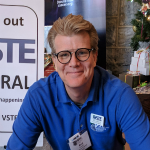Five members were elected by the VSTE membership for the 2018 - 2021 term. Three of those elected are incumbents and will begin their second terms. Two of those elected are new members and can serve up to two terms.
Learn more about each Board member by clicking below:
 Rod Carnill, Incumbent
Rod Carnill, Incumbent
Supervisor of Instructional Technology Coaches
Frederick County Public Schools
 Lynmara Colón
Lynmara Colón
Principal
Prince William County Public Schools
Nicci Dowd
Special Education Teacher
Prince William County Public Schools
Tim Stahmer, Incumbent
Freelance Educator
Fairfax County Public Schools (Retired)
Meg Swecker, Incumbent
Coordinator of Technology Integration/ITRT
Roanoke County Public Schools














